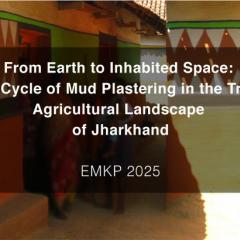
CEPT Conducts Training Program for Govt. Planners

Sat, August 17, 2019 Training Program
Ministry of Housing and Urban Affairs (MoHUA) has been partnering CEPT Research and Development Foundation (CRDF) to conduct accelerated capacity building programs for 25 cities as part of its sub-scheme on Local Area Plan (LAP) and Town Planning Scheme (TPS).
Four such programs on LAP and TPS formulation will be organized over Aug and Sep 2019 to transform urban development in 25 Indian cities. CRDF in collaboration with GoI’s Town and Country Planning Organization (TCPO), the nodal agency for Sub-Scheme implementation, will be executing these programs, which will be attended by about 120 participants.
The first program, held on Aug 5, at CEPT University, was inaugurated by Durga Shanker Mishra, Secretary, MoHUA, with opening remarks from D Thara, Joint Secretary of AMRUT, MoHUA. Dr. Bimal Patel, President, CEPT University, made a presentation on LAPs and Form Based Codes.
LAP around transit - Illustrated Handbook for Indian Cities, a publication that presents complex planning ideas in simple and visual manner, developed by Dr. Rutul Joshi and his team was released on the occasion.
In his inaugural address, Mishra stated that 25 smart cities have been identified to take up the formulation of Local Area Plans (LAPs) and Town Planning Scheme (TPS). He specifically mentioned that through these area based tools, identified areas would benefit in terms of access to basic facilities, provision of open spaces and network of roads which will together enhance the habitat. He desired that these lighthouse cities should become an inspiration for other cities of the respective states who can replicate the exercises taken by these 25 cities. He also informed that based on the request of the State Government, the city of Vadodara is replaced by Rajkot.
CEPT President Dr. Bimal Patel in his presentation stated that the smart cities must advocate area based strategies focussing on efficient and optimum use of land. He quoted that Indian cities do not have efficient land-use and inspite of adequate availability of land they mostly are heavily congested while the European cities are characterised by efficient land-use thereby ensuring compactness of cities. The compact cities also reduce the commuting needs and while the city sprawl consumes a huge amount of agricultural land and often faces haphazard development.
Recent Updates

